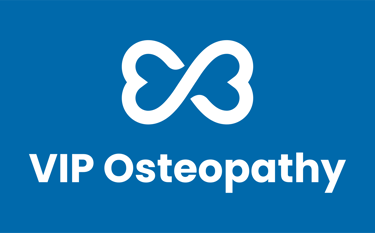Plantar Fasciitis
How to Get Back on Your Feet
VIP Osteopathy - Keilor
2 min read
Foot pain can be surprisingly disruptive—especially when it lingers first thing in the morning or after a long day on your feet. If you’ve been dealing with discomfort in your heel or arch, plantar fasciitis might be the culprit. The good news? There are ways to ease the pain and get you moving more comfortably.
Why Your Foot Hurts
Plantar fasciitis happens when the thick band of tissue along the bottom of your foot, the plantar fascia, becomes irritated or inflamed. This often stems from:
Overuse—long hours on your feet, intense exercise, or sudden increases in activity or training
Poor footwear—unsupportive shoes that don’t cushion the impact properly
Tightness or weakness—limited flexibility in your calves and foot muscles can add stress
Changes in movement—altered walking patterns or posture shifts can contribute to strain
Foot mechanics - such as flat feed or high arches
How Osteopathy Can Support Recovery
Foot pain isn’t just about the foot—it’s connected to how the entire body moves. When assessing plantar fasciitis, I look at ankle, knee, hip and lower back mobility, gait mechanics, and even posture habits to identify contributing factors.Using osteopathic techniques, I aim to help:
Reduce tension in the foot and lower leg
Improve mobility and support better movement patterns
Ease pain and encourage healing
Beyond treatment, you’ll leave with a clear, simple plan that fits your lifestyle. This might include:
Targeted stretching and strengthening exercises for foot and calf flexibility and mobility
Guidance on footwear and supportive inserts
Strategies to manage movement throughout the day , including activity pacing and recovery
Everyday Habits to Support Healing
Avoid walking barefoot on hard surfaces—supportive shoes can help to reduce strain
Stretch your calves and feet regularly to ease tension
Use gentle rolling techniques with a ball or frozen water bottle under your foot for relief
Pay attention to posture—how you stand and walk can affect recovery
Limit long hours on your feet if possible—or break them up with seated breaks
If plantar fasciitis has been slowing you down, let's work together to get you back to comfortable movement. You don’t have to live with sore feet—especially when movement is meant to feel good.


Contact us
Address: Consulting out of The Sports Recovery Hub
767 Old Calder Highway, Keilor, VIC, 3036
Telephone: 0476 807 144
Email: hello@viposteopathy.com.au
© 2025. All rights reserved.


